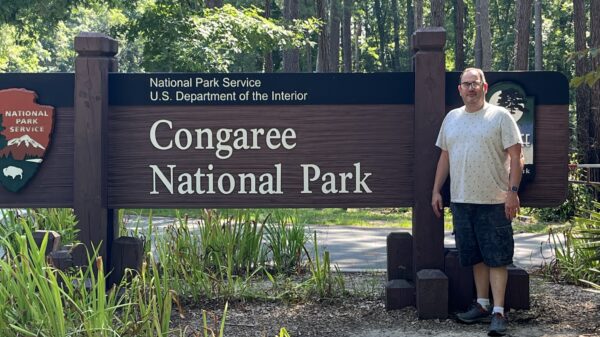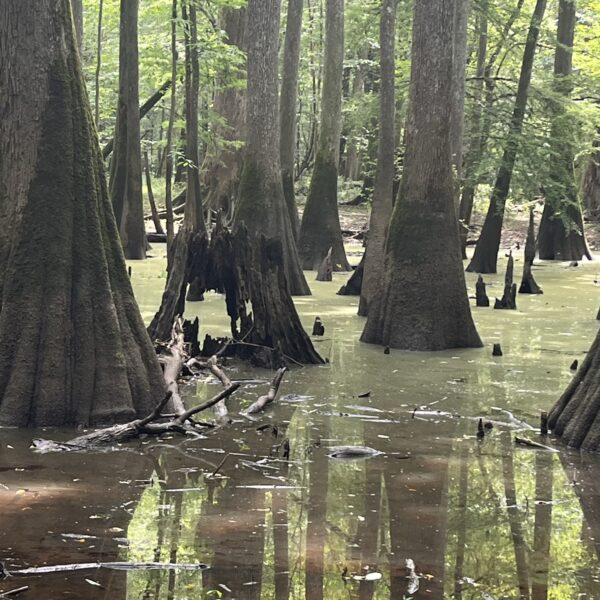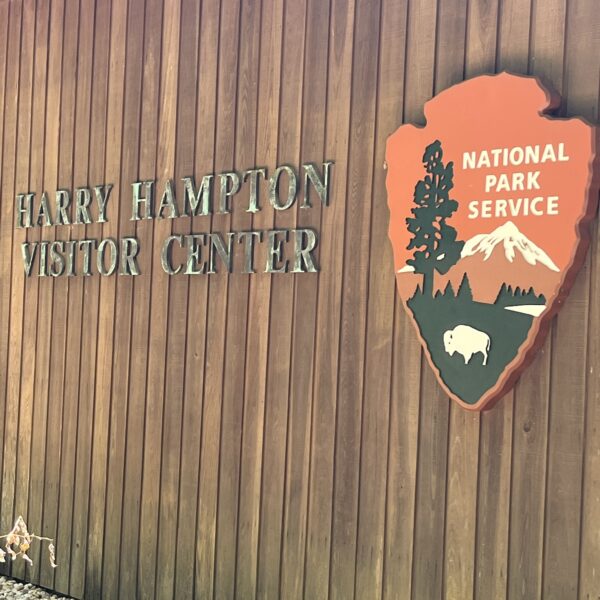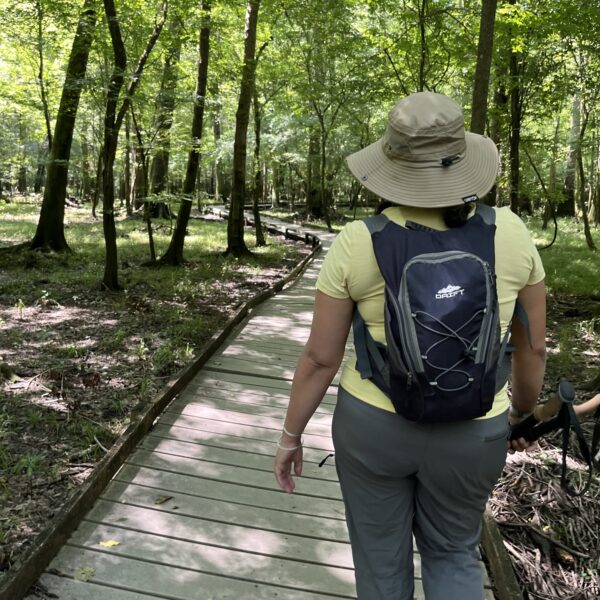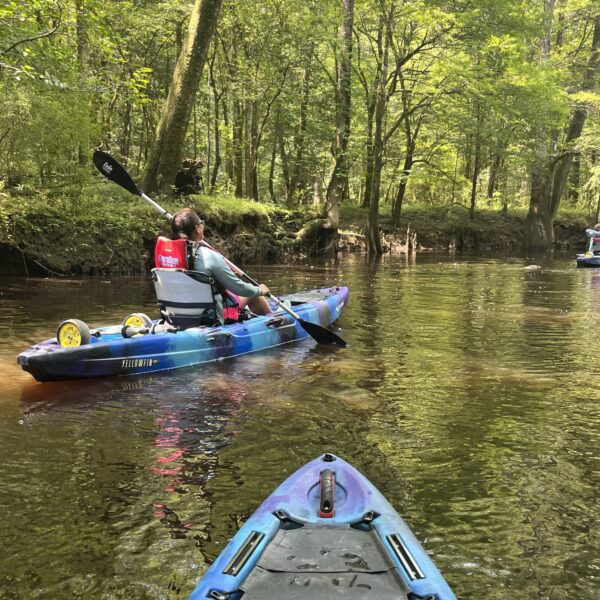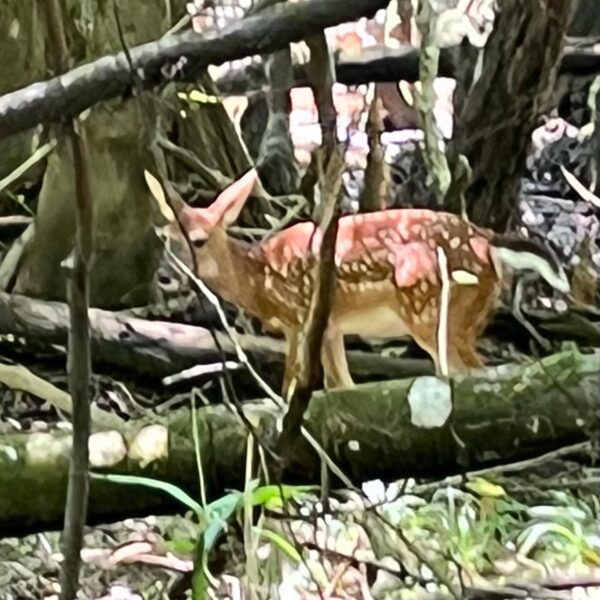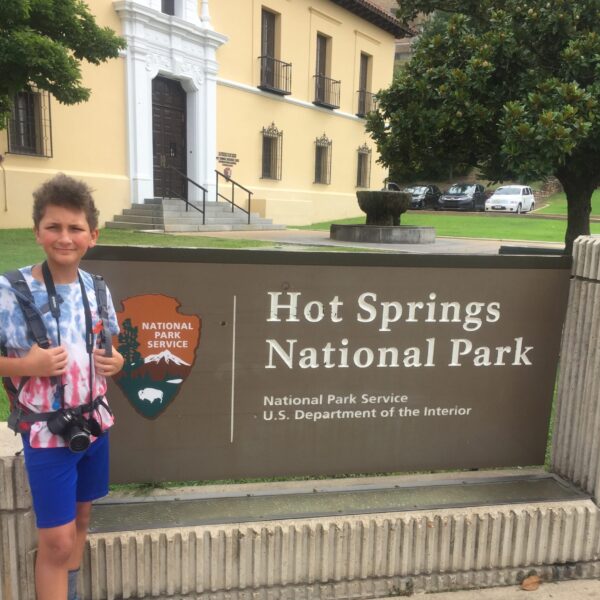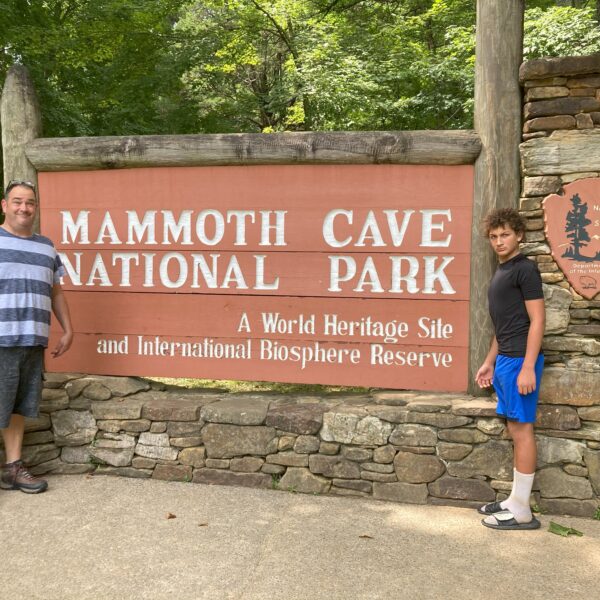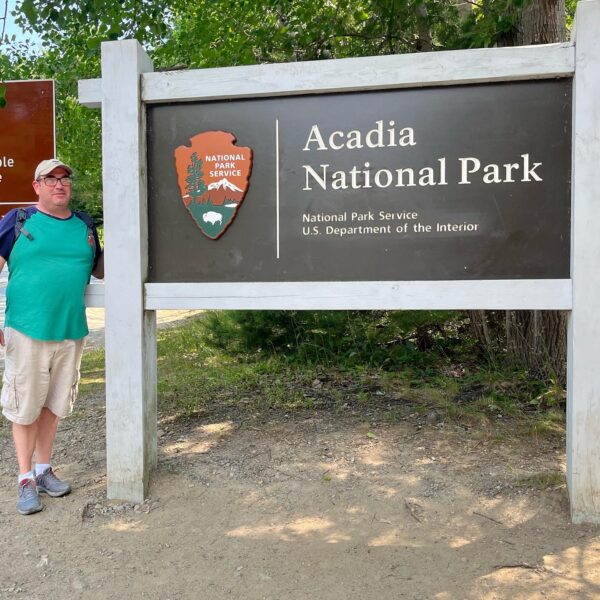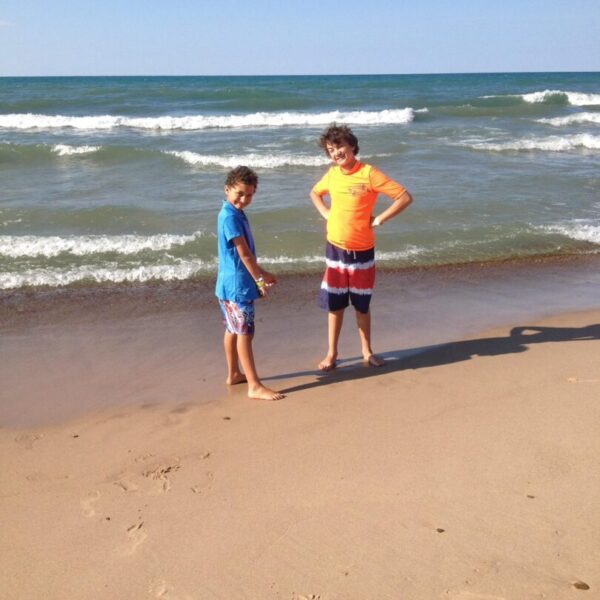Congaree National Park is one of the few national parks on the East Coast and is one of the lesser-known National Parks. Despite not being very popular, this national park is absolutely stunning. Located in South Carolina, this park protects a truly special and beautiful forest. The types of forests within the park are some of the largest and rarest found in the United States. Congaree is home to the largest intact expanse of old-growth bottomland hardwood forest in North America.
Our guide will help you enjoy this little-known park.
If you are new to the National Park Service be sure to check out our National Parks for Beginners page.
Congaree National Park Location
Congaree National Park is located in Hopkins, South Carolina. Hopkins is about 20 miles southeast of Columbia, the state capitol. From Columbia, it is pretty much a straight shot down highway 48.
Congaree NP Facts
- Free entry into the Park with no need for reservations at any time.
- Congaree protects over 20,000 acres of wetland.
- Recognized in 1976 as Congaree Swamp National Monument
- Became a National Park in 2003.
- Protects the largest area of old-growth bottomland hardwood forest within the United States.
- Of the 63 National Parks Congaree ranks 52nd per number of visitors with 159,445 in 2020.
- Congaree is an International Biosphere Reserve.
What Makes Congaree So Special
There are so many amazing ecosystems protected and preserved by the National Park Service. This allows all of us to enjoy them today just as people did centuries ago.
Each region of the National Park Service offers different experiences. The southwest region protects desert land and the great Grand Canyon. The northwest protects mountains, plains, and the diverse Yellowstone. However, the only place you can view untouched bottomland hardwood forests is in South Carolina at Congaree.
In addition to the extremely tall trees, the park protects over 150 species of birds, many of which can be seen while hiking along the trails within the park.
Why This Small National Park Is Worth Visiting
This Park gives visitors a unique look at how the area looked before it was developed.
In addition, Congaree National Park offers something for everyone. For active outdoor adventures, you can take your pick between hiking, kayaking, canoeing, and tent camping, or the more primitive option—backcountry camping. Backcountry camping is a great option for those who really want to rough it and see what the forest has to offer. There are no designated backcountry campsites within the park, which means you can camp anywhere you like, as long as it’s 100 feet away from the riverbanks.
There are 9 hiking trail options (ranging in length from .6 miles to the 24-mile roundtrip Kingsnake Trail,) as well as the Boardwalk Loop Trail (2.4-mile loop.) The Boardwalk Loop is exactly what it sounds like—an easy-going, flat Boardwalk that loops through the forest. This is a great stroller and wheelchair-accessible option, giving everyone a chance to enjoy the forest and observe some of the park’s plants and animals.
Things to Do While Visiting Congaree National Park
There are a number of different options for people to explore the National Park. Since this is one of the smaller parks you can see most of what it has to offer in a single-day trip.
Start at the Visitor Center
The best place to start at any National park Service location is at the visitor center.
Congaree’s Harry Hampton visitor center is open daily from 9:00 am – 5:00 pm. A great way to learn about the ecosystem of the park is to pick up a Junior Ranger booklet at the visitor center.
The Harry Hampton Visitor Center is staffed by park rangers, who assist visitors in planning their visit, providing information, and conducting guided programs. Natural and cultural history exhibits, a park film, and an Eastern National bookstore are also available.
Go Hiking
There are a number of trails at Congaree which are available for foot travel. Because the majority of the park lies within a floodplain, the terrain is generally very flat with only slight elevation changes. The majority of trails begin from the Harry Hampton Visitor Center and vary in length.
The 2.6-mile boardwalk loop begins at the Harry Hampton Visitor Center with an elevated section that leads down into the old-growth bottomland hardwood forest. A variety of different tree species can be observed including bald cypress and tupelo trees in the lowest elevations. Loblolly pines, oaks, maples, and holly can also be observed. The boardwalk has benches along the way and is wheelchair and stroller accessible.
Go Kayaking or Canoeing
One of the best activities at Congaree NP is kayaking or canoeing.
Spending time on Cedar Creek by canoe or kayak is a great way to experience Congaree National Park. This waterway passes through a primeval old-growth forest that contains some of the tallest trees in eastern North America. Opportunities are plentiful for viewing various types of wildlife such as river otters, deer, turtles, wading birds, and even the occasional alligator!
We highly recommend booking your kayaking trip with Carolina Outdoor Adventures.
Their kayak trips are a 3-hour “out and back” guided trip. You will see Bald Cypress, Tupelo, Pine, and Willow Oak trees along the slow-moving creek. The park is also teeming with wildlife from wild boar, otter, deer, various birds, and yes, snakes!
These great trips focus on the history in and around the park and start at the South Cedar Creek Canoe/Kayak Launch inside the National Park.
Our Experience at Congaree National Park
We spent two days exploring this small, but amazing National Park. Although, it is not as big and famous as some of the other National Parks it is certainly worth a visit.
On day one we explored the hiking trails and saw a ton of wildlife. Everything from wild pigs, to deer, large snakes, and large spiders. The hiking was easy and relaxing. We spent most of our time along the boardwalk. All along the boardwalk, there are stops with information that explains what you are looking at, and benches to sit and rest.
We spent day two with Carolina Outdoor Adventures and had an amazing time. This 3-hour kayaking trip was the highlight of our visit to the park. The guides were extremely knowledgeable about the area, and we were able to find some amazing wildlife.
We love to hear form our followers. Please leave a comment below.
Have you visited Congaree National Park? How was your experience? Do you have any tips for others looking to visit the area?

